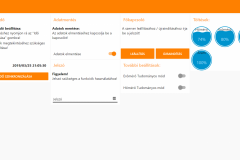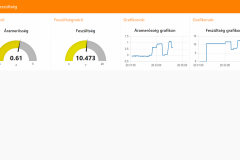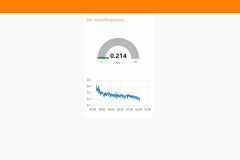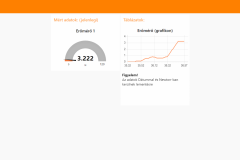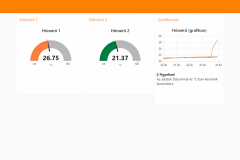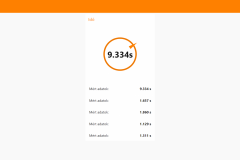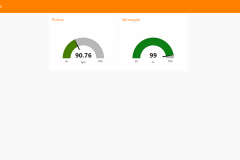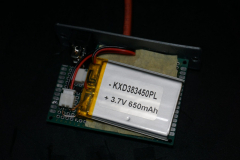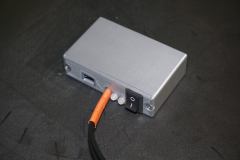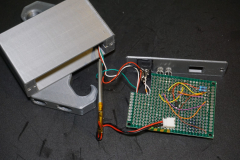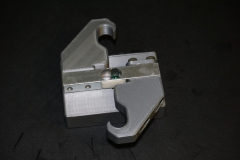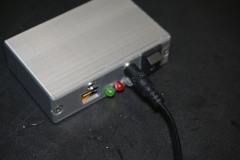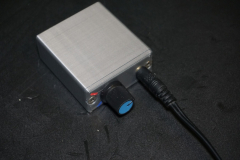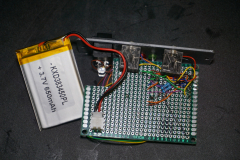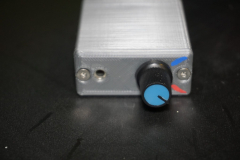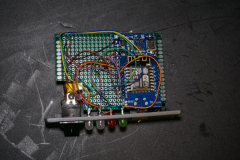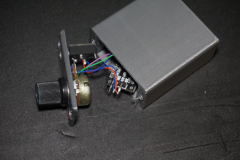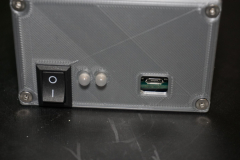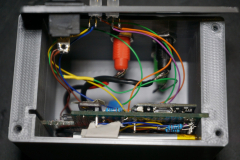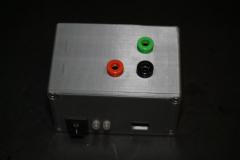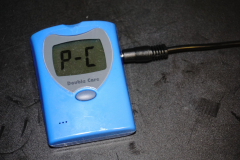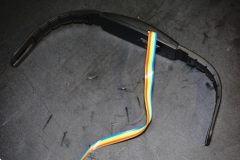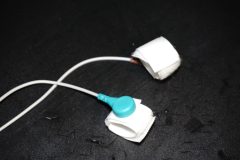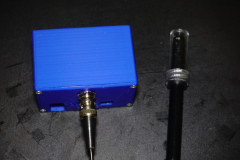Our multifunctional measurement system’s name came from the multi-faced ancient Roman god Janus and Janus Pannonius, bishop of Pécs city, poet and of course the denominator of our high school. This device and system has several functions with subjects and scientific fields and its framework can be extended.
Our aim was to create a complex measuring device (system) for physics, chemistry, biology and health lessons in schools. For constructing and using the device, it was necessary to have mathematic and information technology knowledge. With the help of this instrument, experiments and measurements during lessons are faster, more effective, expressive and precise. Moreover, it can contribute to healthy lifestyle through its health measurement system. According to our opinion, this kind of educational tool with its complexity is an innovation and suitable for schools.
The JanusMeter is a universal digital measurement system for science lessons. The measuring units transfer the measured data through WiFi to a control unit, which sends everything to a PC or a smartphone. The program stores the data and creates a graph. Every unit has a WeMos D1 Mini microcontroller, which reads the sensor’s data, processes it and transfers everything to the control unit through WiFi. The communication can occur on the school’s internet system or directly with the control unit. The measuring units function with lithium batteries and a self-developed program operates them. The plastic boxes of the device are self-designed and self-made by a 3D printer. The calibration of every unit was also made by our team. We put an emphasis on the graphic design of the PC’s and smartphone’s visualization. The platform is user friendly so students can easily understand it.
Why innovative?
- Universal, for different scientific fields, subjects (physics, chemistry, biology and health lessons) with Smart measurement.
- Innovative because of its complexity and exclusive in the educational field.
- Our measuring units are similar to other units on the market, but with a lower price and most of them are self-developed.
- The data can be transferred to IWBs (Interactive Whiteboard).
- Users can track their data on their smartphones.
- The measured data can be used for calculations in real time or can be stored and later processed with various programs.
- It can be applied easily for amateur users because of its simple platform.
- Extendable framework! New measure units can be added quickly because of its modular build up. The list of subjects can be extended too so the whole system provides a possibility to continuous improvement.
- The janusmeter.hu website provides source codes and many other information about the project, so it is available for visitors.
- Production is simple for schools and individuals.
The “BRAIN”, the control unit: The “brain” of the JanusMeter is placed in a uniquely designed 3D printed box. It is a Raspberry Pi computer and a router. The Raspberry Pi is mainly developed for educational purposes, which uses an ARM architectured system chip (SOC). It is perfect for this purpose because of its low price.
The user interface: The user interface is driven by Node-Red, which is designed for smart devices and retrieving its data. This program provides the user interface for students and teachers on smartphones and PCs. The user interface looks modern and understandable for everyone. Node-Red is a flow based programming language, available for everybody and it can be modified simply so students are able to extend the given complex system and they can add their own calculations too.
The data retrieved by the measurements are stored in a diary every second in chronological order.
Thermometer: The thermometer unit consists of one or more thermometers and a controller. (attachment 5-7th Picture) The control panel uses a WiFi connected computer and a lithium battery so the device is mobile and completely wireless. The digital thermometers are waterproof and they can measure from -55°C to 125°C with 0,1°C accuracy, which is optimal for every physics lesson’s experiments. For example, it is perfectly useful for calorimetrical measurements, where multiple liquid’s temperature is measured.
Force meter: The force meter (attachment 8-10th Picture) is similar to a regular spring type force meter, but this is much more accurate. The size is only larger by a little. The device consists of a load cell, which measures the force and a circuit, which transfers the data through WiFi to the “Brain”. The maximal force measured is 50N, which is approximately 5 kgs. Accuracy is 0,001N so this device is perfectly suited for educational force measurements and experiments.
Digital stopwatch: The digital stopwatch (Attachment 11-13th picture) is suitable for great accuracy time measurement. Compared to a traditional stopwatch, this device can be started and stopped with proximity and noise sensors. A huge advantage of this feature is that the measurement isn’t influenced by human reaction times. The different starting and stopping options are attached to the stopwatch unit with a 3,5mm jack cable. The jack cable is cheap and easily replaceable in case it is damaged. The controller of the stopwatch contains a battery and a WiFi module so measurements are directly transferred to the control unit, which processes the data and sends them to the users. The time measurement takes place inside the device so it can be 0,001 second accurate.
Voltage and current meter: This unit is used to measure voltage and current at the same time (Attachment 14-16th picture). The device is connected with 3 banana plugs which is a very common method of bounding. Compared to a traditional multimeter this device doesn’t need pre-set ranges. The box of this unit has a lithium battery, a WiFi module and a 16 bit ADC, (analog to digital converter) which provides the accuracy of the result. Voltage can be measured from 0 to 20 V and with 0,001 V accuracy while amperage is between -5 and 5A with 0,01A accuracy. This device is suitable for every experiment during the physics lesson.
Further measuring units:
• PH sensor: Solution’s PH measurement digitally. It is well designed for experiments, where the solution’s PH is stable. (Attachment 17-18th picture)
• Blood glucose meter: Its operation is similar to the traditional ones, fingertips have to be pierced and the blood drop must be placed on the test strip. (Attachment 19-20th picture)
• Pulse oximeter: It offers pulse and blood oxygen level measurement by putting our finger into the unit. (Attachment 21-23rd picture)
• Skin impedance measurement: The skin impedance called galvanic skin response (GSR) is based on the skin’s electrostatic impedance change. The GSR analysis is based on the assumption that skin resistance varies with the state of sweat glands in the skin due to stress situations and we are not able to perceive without this device. (Attachment 24-26th picture)
• Body position monitor: It is a special device, which is capable of measuring the actual position of a human body or objects. As an extra feature, we have constructed a simulation program for this unit, which shows the state of our body. The program is made by Unity and it receives the rotation’s data from the control unit. These data are projected on a 3D human model, which is rotating around its stem and different bends can be presented as well. The usage of this device is suggested for backbone examinations and body position treatments.
Furthermore, this device is also functioning as an accelerometer, which is used for acceleration and angle measurements. (Attachment 27-30th picture)
Finally, we would like to express our gratitude to our school for the support, which enabled us the chance to develop JanusMeter. We would also like to thank for the opportunity to present our product on various exhibitions and competitions. We would also like to thank our families the financial support and Mr. Peter Dlusztus coordinative teacher that he helped our project.
Worthy coins don’t come from barren ores
Only from pure silver or shiny gold
Janus Pannonius
